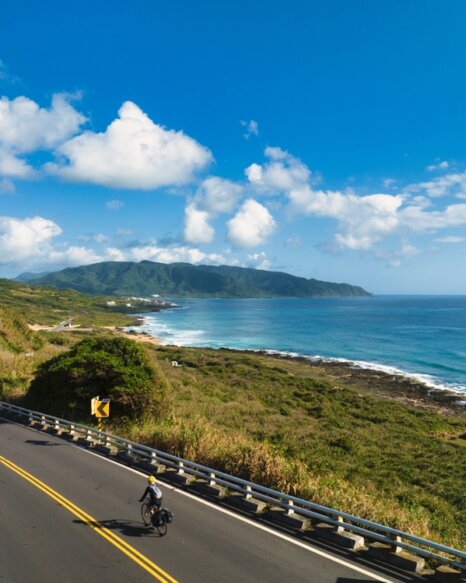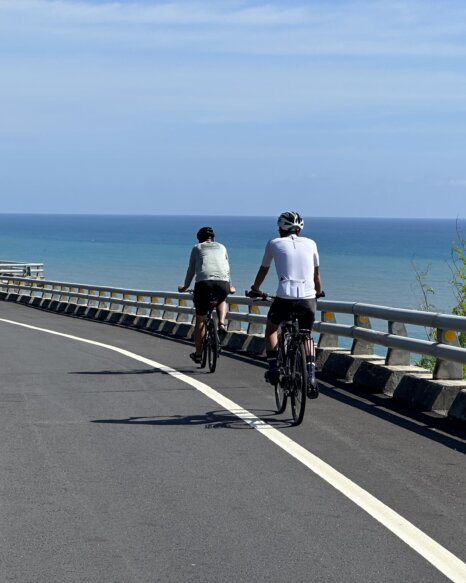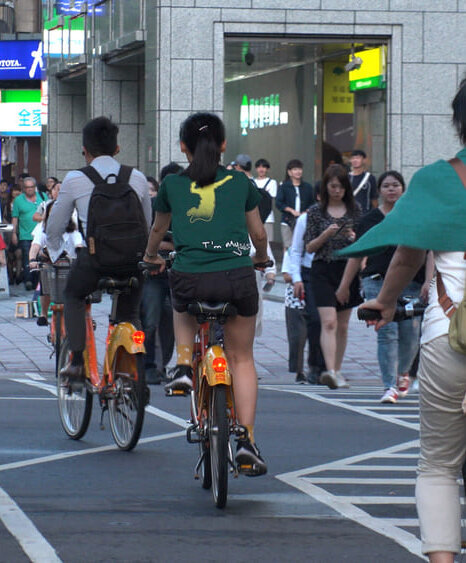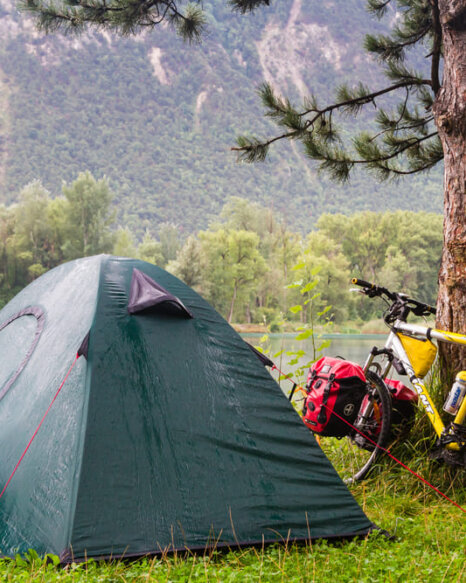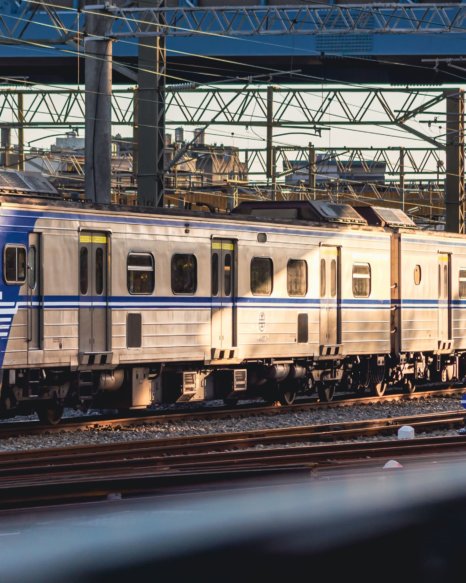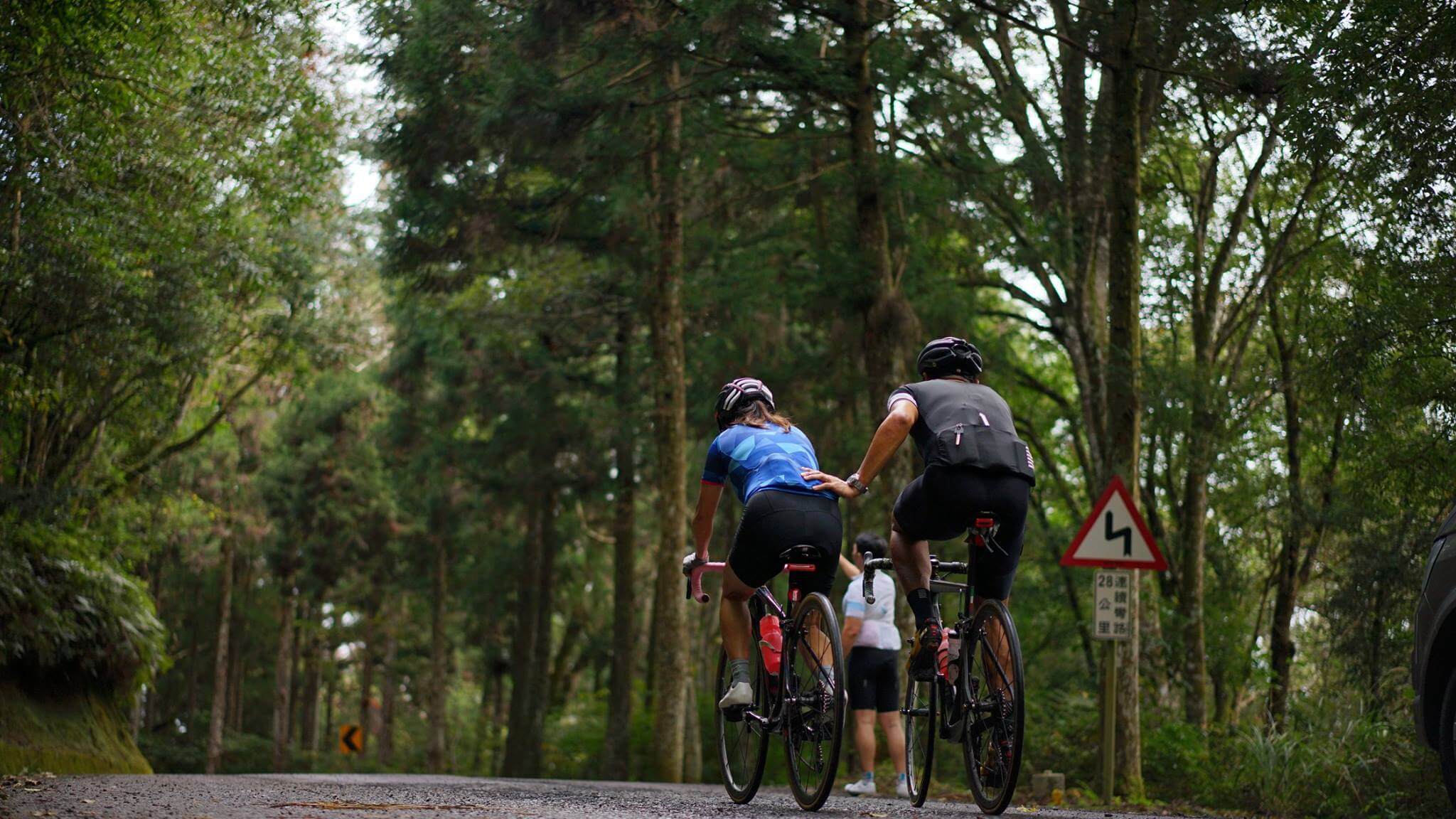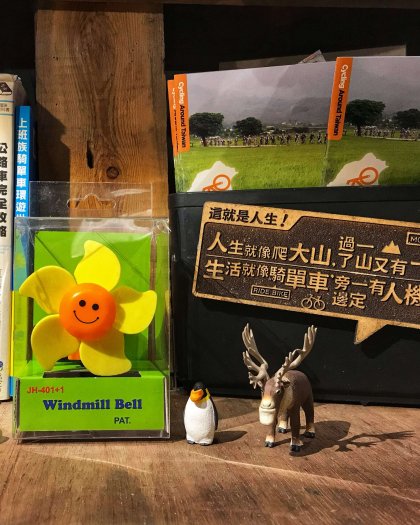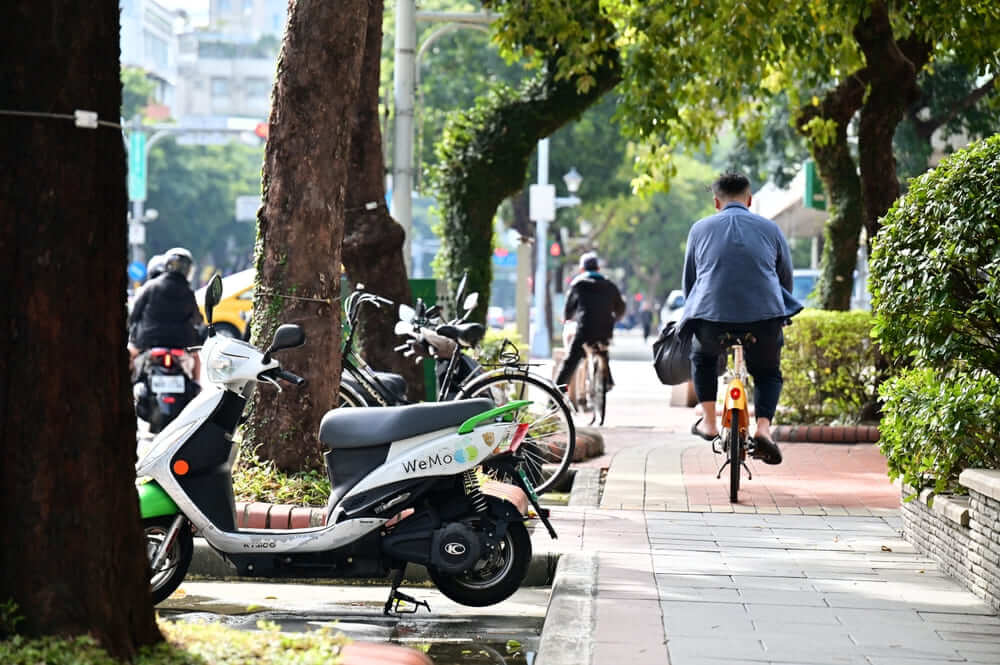
Planning Cycling in Taiwan but unsure about the best season? Choosing the best time can make your journey even more memorable!
In this article, we’ll guide you through the best time to visit Taiwan for your round-the-island trip, highlighting seasonal activities, attractions, and tips for each season.
Table Of The Best Time to Visit Taiwan
Cycling Around Taiwan in Spring (March-May):
April is the best time to visit Taiwan.
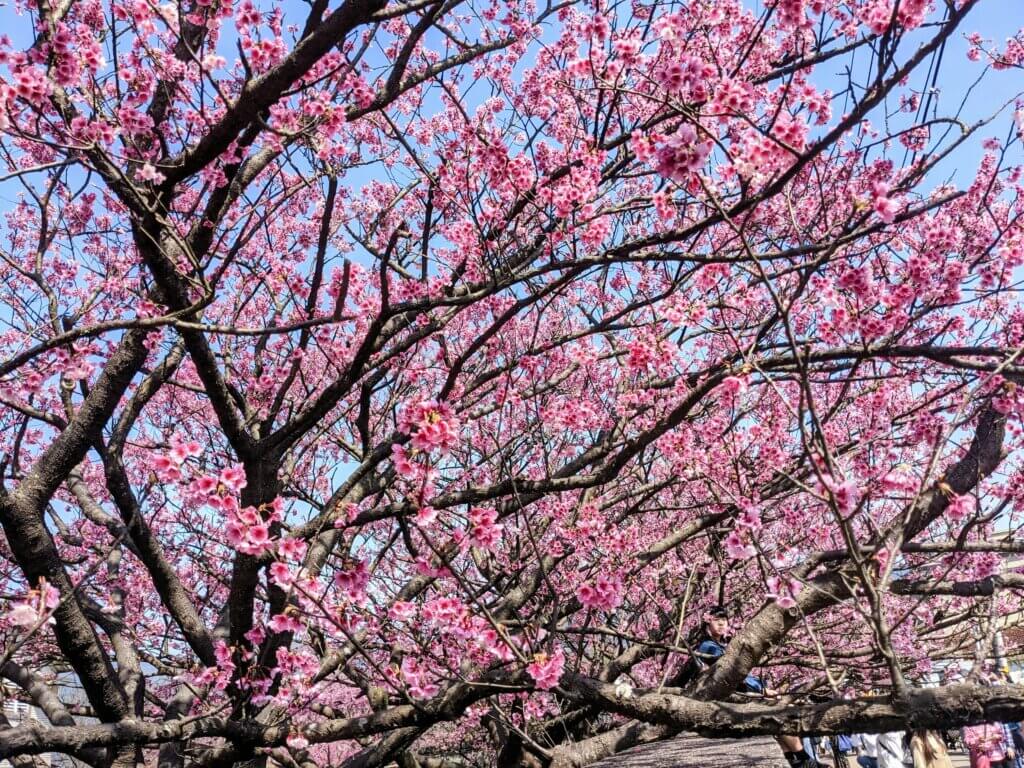
Climate Considerations
- Moderate Temperatures: Spring temperatures typically range from 20-25°C, making it ideal for cycling. However, there can be significant temperature differences between day and night, so be sure to pack warm layers.
- Wind Protection: Spring winds can be strong, especially when cycling along the coast. Be prepared for windy conditions by wearing windbreakers or other protective gear.
Clothing Choices
- Layered Clothing: Due to the large temperature differences between morning and evening in spring, it’s recommended to dress in layers. Start with a moisture-wicking base layer, add a warm mid-layer jacket, and adjust your outer layer based on the temperature.
- Windproof Clothing: Choose a lightweight, windproof cycling jacket to effectively protect yourself from the chilly spring winds and prevent catching a cold while riding.
- Breathable Clothing: When the temperature rises around midday, wear a breathable cycling jersey as your base layer to stay dry and comfortable during your ride.
- Rain Gear: Spring can be rainy, so pack a lightweight, waterproof raincoat or poncho to protect yourself from getting wet.
Spring Highlights
- Flower Viewing: Spring is the perfect time for flower viewing, with opportunities to admire cherry blossoms, calla lilies, and other beautiful blooms along the way.
- Pollen Allergy Precautions: Those with pollen allergies should take extra care by wearing a mask while cycling to reduce pollen inhalation, and carrying allergy medication in case of need.
Spring (March-May) is one of the best time to visit Taiwan for cycling. The comfortable temperatures, averaging between 20 and 25 degrees Celsius, make it ideal for outdoor activities. This is also the prime season for flower viewing and firefly watching.
With various flowers like cherry blossoms and calla lilies in full bloom, the island transforms into a colorful paradise for flower enthusiasts.
However, those with pollen allergies should take extra precautions and carry allergy medication during this time.
The best time to visit Taiwan have 2 seasons:
- Spring (March-May)
- Autumn (September-November)
We recommend starting your journey in early March to avoid the Tomb Sweeping Day crowds, or after the holiday in April when Taiwan enters a relatively dry season.
However, be aware that popular attractions might be crowded, such as the Matsu pilgrimage, and occasional spring showers may occur, so pack a light jacket!
Weather patterns
Relatively dry season, with occasional drizzle (mostly prolonged light rain).
- Relatively dry season from March to May: Apart from Taipei’s unpredictable weather, most areas outside of northern Taiwan will experience pleasant weather.
- Monitor Weather Forecasts: Stay updated on weather changes and check the forecast for your cycling days in advance to avoid riding in adverse conditions.
- Responding to Sudden Weather Changes: Spring weather can be unpredictable. If you encounter sudden changes, immediately seek a safe location to take shelter and ensure your safety.
Moreover, spring is the best time to visit Taiwan witness the enchanting spectacle of fireflies, especially in the Alishan region where the firefly show is renowned.
As darkness falls, tens of thousands of fireflies dance among the trees, emitting a faint and gentle glow that creates a dreamy and romantic atmosphere.
This sight is not only mesmerizing but also evokes a sense of wonder for the magic of nature. Therefore, spring is not only a great time for outdoor excursions and flower viewing but also a perfect opportunity to experience the romance of the night.
- Advantages of Cycling in Taiwan in Spring:
- offers the perfect weather with comfortable temperatures ideal for outdoor activities.
- The landscape bursts with vibrant blooms, creating picturesque scenery for cycling or hiking.
- The prime season for witnessing the magical spectacle of fireflies illuminating the night.
- Disadvantages of Cycling in Taiwan in Spring:
- Popular attractions may be crowded
- Occasional spring showers
- Pollen allergy sufferers should take precautions
- Popular attractions may be crowded
Cycling Around Taiwan in Summer (June-August):
Heatstroke Prevention, Sun Protection
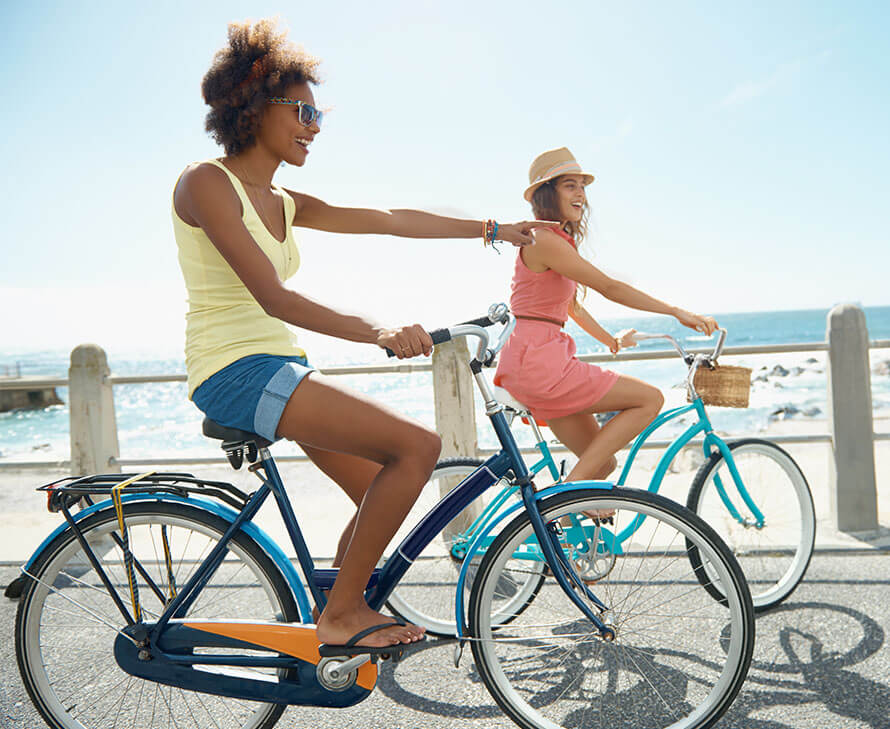
- Cycling trip in Summer, it’s crucial to pay attention to heatstroke prevention and sun protection.
- Carry enough water with you and replenish fluids regularly to avoid dehydration.
- Wear breathable cycling clothes and use sunscreen, arm sleeves, and sunglasses to protect your skin.
Heatstroke Prevention Measures
- Hydration: Due to the high temperatures in summer, it’s essential to carry enough water with you while cycling and replenish fluids regularly to avoid dehydration.
- Rest Periods: Take regular breaks during your ride to avoid heatstroke. Choose shady spots to rest and relax your muscles.
- Dress Light: Choose lightweight, breathable clothing and avoid wearing overly thick garments.
Sun Protection Measures
- Apply Sunscreen: Before setting out on your ride, apply sunscreen and reapply it regularly to prevent sunburn.
- Wear Sun Protective Gear: Wear a wide-brimmed hat, sunglasses, and long-sleeved sun-protective clothing to minimize direct sun exposure.
- Choose Cycling Times Wisely: Avoid cycling during the hottest hours of the day, opting for cooler times in the morning or evening.
Clothing Choices
- Breathable Clothing: Choose cycling apparel made from breathable, moisture-wicking fabrics to stay dry and comfortable during your ride.
- Sun-Protective Clothing: Wear long-sleeved sun-protective shirts and arm sleeves to minimize sun exposure and prevent sunburn.
- Cycling Shorts: Opt for cycling shorts with padding for support and comfort, reducing discomfort during long rides.
Protective Gear
- Helmet: Wear a proper cycling helmet to ensure head safety. Choose a helmet with ventilation for added comfort.
- Gloves: Choose breathable, non-slip cycling gloves to reduce hand friction and provide a good grip.
- Sunglasses: Wear sunglasses with UV protection to shield your eyes from harsh sunlight and improve visibility while cycling.
Waterproof Gear
- Waterproof Bag: Carry a waterproof bag or a waterproof bag cover to protect electronic devices and valuable items from sweat and rain.
- Rain Gear: Even in summer, afternoon thunderstorms are still common, so pack a lightweight raincoat or poncho to be prepared for unexpected showers.
- Shoes: Choose breathable cycling shoes or athletic shoes that are suitable for long rides, providing good support and comfort.
Nutritional Supplements
- Carry Energy Snacks: Bring along energy bars, chocolate, dried fruits, and other high-energy foods to replenish your energy levels during the ride.
- Regular Meals: Ensure you eat three meals a day and avoid skipping meals due to cycling, as this can affect your energy levels.
Read More: Fuel Your Ride: 7 Essential Cycling Nutrition Tips for Peak Performance
Weather patterns
Afternoon thunderstorms (mostly short, heavy downpours)
- Monitor Weather Forecasts: Stay updated on weather changes and check the forecast for your cycling days in advance to avoid riding in adverse conditions like typhoons or thunderstorms.
- Avoid Afternoon Thunderstorms: Afternoon thunderstorms are frequent in summer, so try to avoid cycling during these times. If you encounter a thunderstorm, seek shelter in a safe place.
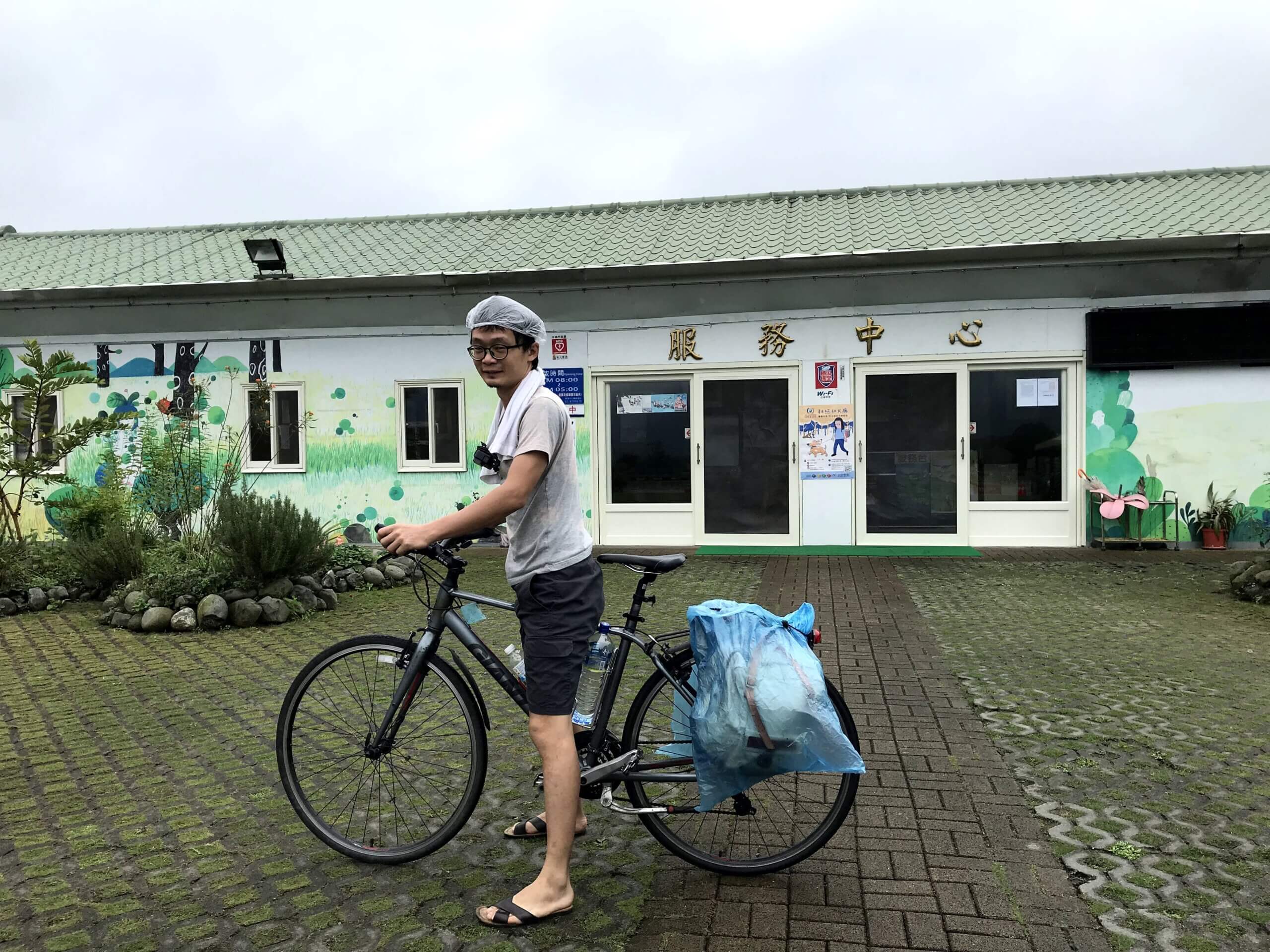
However, summer can still be one of the best time to visit Taiwan if you’re seeking beach activities. Whether it’s Kenting, Green Island, or Orchid Island, each place offers a unique ocean charm.
- Beach Activities: Enjoy surfing, snorkeling, diving, and other water activities.
- Lively Night Markets: Experience Taiwan’s unique night market culture and savor a variety of delicious food.
- Mountain Retreats: Escape the heat by heading to the mountains and enjoying the cool climate and natural scenery.
- Abundant Fruits: Taste sweet and juicy summer fruits like mangoes and lychees.
- Special Events: Participate in various summer festivals, such as the hot air balloon festival and fireworks festivals.
Summer in Taiwan: Highlights and Tips
Beach Destinations
- Kenting: White sandy beaches, turquoise waters, ideal for surfing, snorkeling, and sunbathing
- Green Island: Crystal-clear waters, abundant marine life, a paradise for diving
- Orchid Island: Unique culture and natural landscapes
Mountain Retreats
- Alishan: Magnificent sunrise, sea of clouds, cooler temperatures
- Xitou: Lush green forest trails, escape from the city heat
- Sun Moon Lake: Tranquil waters, beautiful scenery
Culinary Delights
- Summer Fruits: Abundant and delicious, such as mangoes and lychees
Weather Considerations
- Afternoon Thunderstorms: Frequent and can disrupt plans
- Typhoons: Be aware of the possibility and take precautions
Cycling Tips
- Start Early: Avoid the midday heat
- Take Breaks: Find cool spots to rest during the day
- Mosquito Repellent: Essential for a comfortable experience
Overall
While summer might not be the traditional “best time to visit Taiwan” due to the heat and potential for rain, it still offers diverse experiences, from beach activities to mountain escapes and delicious fruits. With proper planning, summer can still be a fantastic time to visit and explore Taiwan, especially for those seeking adventure and unique experiences.
- Advantages of Cycling in Taiwan in Summer: Beach activities, lively night markets, mountain retreats, delicious fruits, and diverse events
- Disadvantages of Cycling in Taiwan in Summer: Scorching heat, frequent afternoon thunderstorms, typhoon season, and abundant mosquitoes
Cycling Around Taiwan in Autumn (September-November):
October is the Best Time to visit Taiwan
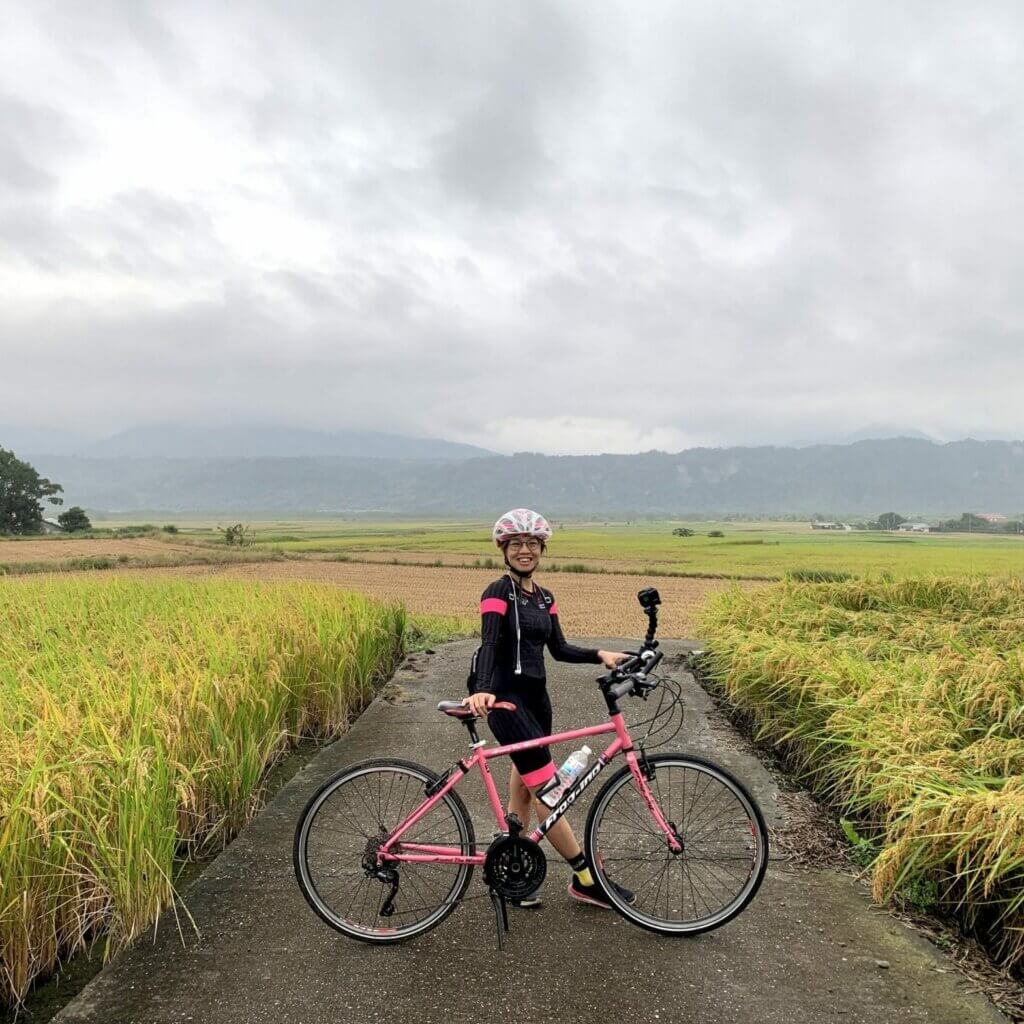
Autumn (September-November) is arguably the best time to visit Taiwan for a round-the-island trip.
The weather is neither too cold nor too hot, making it similar to spring and a favorite among many travelers.
With average temperatures ranging from 22 to 28°C, the days are warm and comfortable, while the nights are slightly cool, perfect for outdoor activities.
This is also the time when maple leaves start turning red, particularly in the mountainous areas of central and northern Taiwan.
The entire forest is painted with fiery reds and golden yellows, making it the best time to admire the autumn foliage.
Alishan and Taipingshan are popular destinations for leaf-peeping, offering picturesque scenery. It’s recommended to book accommodation in advance, as rooms in these areas are in high demand.
Climate Considerations
- Comfortable Temperatures: Autumn temperatures are moderate, usually ranging from 20-28 degrees Celsius during the day, making it perfect for long bike rides. Mornings and evenings can be a bit chilly, so remember to pack warm layers.
- Dry and Less Rain: Autumn has less rainfall and relatively dry air, making it one of the most suitable seasons for outdoor activities throughout the year.
Clothing Choices
- Layered Clothing: Due to the significant temperature difference between morning and evening, it’s recommended to dress in layers, like an onion. Start with a moisture-wicking base layer, add a warm mid-layer jacket, and adjust your outer layer based on the temperature.
- Breathable Clothing: During the day when temperatures are moderate, wear a breathable cycling jersey as your base layer to stay dry and comfortable throughout your ride.
- Windproof Clothing: Choose a lightweight, windproof cycling jacket to effectively protect yourself from the chilly winds in the morning and evening.
Night ride
- Increased Cycling Activity: Be aware of the risks associated with night cycling, such as the “One Day North-South” or “One Day Double Tower” challenges.
- Reflective Gear: If you plan to cycle at night, it’s recommended to wear a reflective vest or attach reflective strips to your bike to enhance visibility.
- Bike Lights: Equip your bike with front and rear lights to ensure visibility to other road users in low-light conditions, enhancing safety.
Autumn Highlights
- Autumn Foliage Viewing: Autumn is the prime time to admire the vibrant colors of maple leaves, with Alishan and Taroko Gorge being among the best spots for leaf-peeping in Taiwan.
- Harvest Season: Autumn is the harvest season in Taiwan, where you can enjoy fresh fruits and agricultural products like persimmons, grapefruits, and pomelos.

Weather Patterns
Autumn weather is relatively stable, making it the best time to visit Taiwan for a cycling trip around the island.
- Best Months for Cycling in Taiwan: October-November, when the “Indian Summer” heat subsides and temperatures become more comfortable. However, be mindful of the significant temperature difference between day and night.
- Stable Weather: Autumn weather is relatively stable with less rainfall, making it ideal for cycling. However, be aware of occasional cold fronts that can bring a sudden drop in temperature.
- Responding to Sudden Weather Changes: Always keep an eye on the weather forecast and seek shelter in a safe place immediately if there’s a sudden change in weather, such as an autumn typhoon (also known as an “Autumn Tiger” in Taiwan), which can be a sudden and intense hurricane.
Why Autumn is the Best Time to Visit Taiwan
- Pleasant weather: Not too hot or too cold, perfect for outdoor activities.
- Exciting events: Sun Moon Lake Swimming Carnival, Taichung Jazz Festival offer unique cultural experiences.
- Scenic beauty: Vibrant autumn foliage, especially in mountainous areas.
- Comfortable cycling: Milder temperatures and less rainfall create ideal cycling conditions.
Things to Note:
- Early September Typhoons: Be cautious and check weather forecasts before traveling.
- Temperature Fluctuations: Pack layers to accommodate day and night temperature differences.
Advantages and Disadvantages
- Advantages of Cycling in Taiwan in Autumn: Comfortable temperatures, stunning autumn foliage, stable weather, ideal for outdoor activities, diverse events
- Disadvantages of Cycling in Taiwan in Autumn: Early autumn typhoons, potential crowds at some attractions, significant temperature differences between day and night
Cycling Around Taiwan in Winter (December-February):
Focus on staying warm
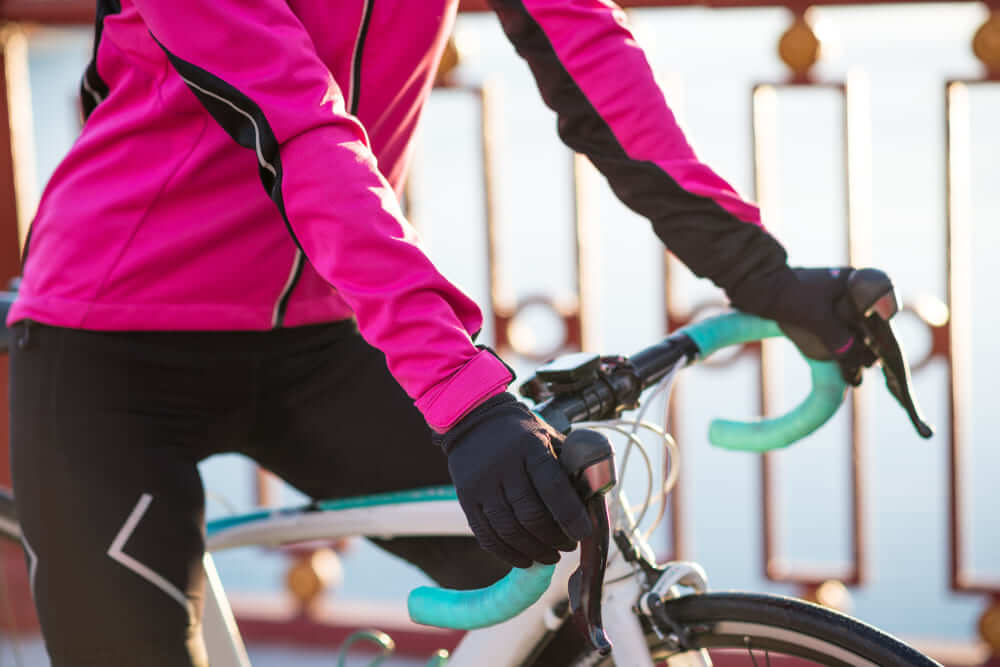
Taiwan, situated in subtropical and tropical climates, experiences mild winters with temperatures rarely dropping below 0 degrees Celsius, and snowfall is uncommon. For those living in colder regions, Taiwan’s winter offers a relatively warm escape.
As a result, many Europeans and Americans choose to cycle around Taiwan during the winter months to avoid the harsh winters back home.
When you decide to embark on a round-the-island trip in winter, be prepared for cooler temperatures averaging between 15 to 20°C, especially in mountainous areas where temperatures can approach zero.
This season is perfect for enjoying hot springs, and Taiwan offers a multitude of options from Beitou to Zhiben. You can even plan a hot spring-themed itinerary for your journey, ensuring warmth and relaxation throughout.
With a bit of luck, you might even witness the rare sight of snow in Taiwan, with Hehuanshan and Taipingshan being ideal spots for snow viewing.
However, mountain roads are prone to icing during winter, so be sure to equip your vehicle with snow chains for safe driving.
Climate Considerations
- Lower Temperatures: Winter temperatures typically range from 10-20 degrees Celsius, with potentially lower temperatures in the north and mountainous areas. Be sure to pack warm clothes.
- Dry Weather: The air humidity is low (except for Taipei and Yilan, which have relatively higher humidity), but daylight hours are shorter, so it’s recommended to start your cycling trips early in the day.
Clothing Choices
- Warm Clothing: Choose cycling clothes with good insulation. Opt for a moisture-wicking base layer, a warm fleece mid-layer, and a windproof outer layer.
- Layered Clothing: Adjust your clothing according to temperature changes. Add warm layers in the morning and evening, and reduce layers appropriately during midday.
- Windproof Gear: Wear windproof gloves, a scarf, and a hat to effectively protect yourself from the cold winds and keep your body warm.
Winter highlights
- Hot Spring Therapy: Soaking in hot springs after a winter cycling trip is a great way to relax and rejuvenate. Taiwan offers excellent hot spring resources in various locations such as Beitou, Yangmingshan, and Chiayi.
- Culinary Delights: Winter is the peak season for many Taiwanese delicacies, such as ginger duck and sesame oil chicken. You can savor these dishes during your cycling trip to replenish your energy.
Keeping Warm
- Warm-up Exercises: Due to the lower temperatures in winter, it’s crucial to do a thorough warm-up before setting off to prevent injuries.
- Take Breaks: Remember to take regular breaks during your cycling trip to maintain your energy levels and avoid exhaustion.
- Hydration: Although you may not sweat as much in winter, it’s still important to drink water regularly to maintain your body’s fluid balance.
Cold Weather Gear
- Freeze-Proof Lubrication: Due to the lower temperatures in winter, it’s necessary to apply freeze-proof lubricant to your bicycle to ensure smooth operation of the gears and brakes.
- Waterproof Measures: In case of wet and slippery roads, take precautions to maintain your bicycle’s waterproofness to prevent parts from rusting due to moisture.
Weather Patterns
- Stable Weather: Winter weather is relatively stable with less rainfall in central and southern Taiwan. However, cold air masses can occasionally affect northern and mountainous areas, so be sure to stay warm.
- Responding to Sudden Weather Changes: Always keep an eye on the weather forecast and seek shelter in a safe place immediately if there’s a sudden change in weather, ensuring your safety.
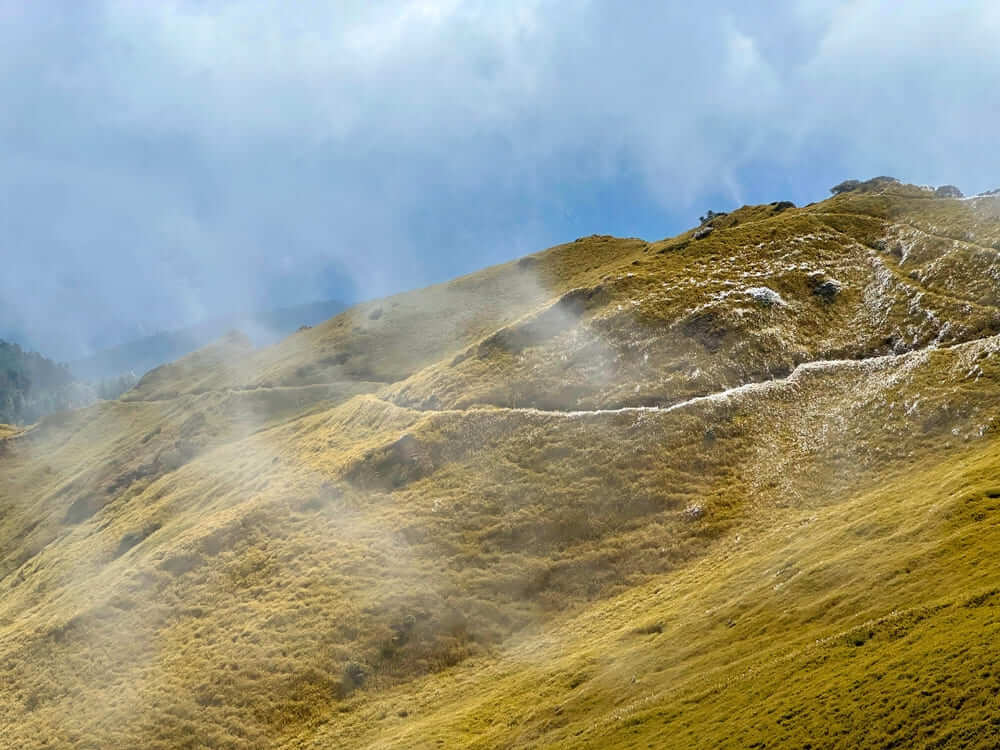
Winter in Taiwan: Highlights and Tips
Making it a Contender for the Best Time to Visit Taiwan
Festive Atmosphere
- Lunar New Year celebrations with bustling markets and temple visits, offering a unique cultural experience that makes winter one of the best times to visit Taiwan.
Tourist Attractions
- Popular with European and American tourists escaping harsh winters, highlighting the appeal of Taiwan’s mild climate even in the colder months.
- Taiwanese students on winter break also contribute to increased crowds, indicating it’s a popular time for domestic travel as well.
Weather Considerations
- Strong northeast monsoon, especially in coastal areas, which can affect outdoor activities.
- Mountain attractions may be closed due to weather, so be sure to check beforehand.
Planning Tips
- Book bicycle rentals well in advance (1 month recommended) for December-February, especially if you’re aiming for the best time to visit Taiwan during the winter months.
- Exercise caution while cycling in coastal areas due to strong winds.
- Check for closures of mountain attractions before heading out.
Advantages and Disadvantages
- Advantages of Cycling in Taiwan in Winter: Perfect for hot springs, fewer crowds, chance to see snow, experience festive atmosphere, diverse climates due to significant temperature difference between north and south.
- Disadvantages of Cycling in Taiwan in Winter: Cold weather, strong northeast monsoon winds, potential closure of some attractions, need for more warm clothing.
Cycling in Taiwan Guide: What to Bring for Each Season
In the previous section, we provided a detailed overview of Taiwan’s climate throughout the year and essential tips for cycling around the island. Now, to help you determine the best time to visit Taiwan for your cycling adventure, the following table summarizes the pros, cons, and recommended routes for each season:
| Season | Advantages | Disadvantages | Route Suggestion |
| Spring (March – May) | Comfortable temperatures ideal for cycling; The northeast monsoon weakens, making a clockwise round-the-island trip relatively downwind. | Occasional cold fronts; Strong headwinds or crosswinds may persist in certain areas. | Starting from Taipei, you can choose to go clockwise or counterclockwise. Remember to pack warm clothes and be prepared for the northeast monsoon winds. |
| Summer (June – August) | Longer daylight hours allow for extended cycling time; Beautiful scenery with blooming flowers. | High temperatures and humidity, with a high risk of heatstroke; Frequent afternoon thunderstorms; High probability of typhoons. | We suggest a clockwise route, as you’ll enjoy tailwinds along the western coast and the mountains will provide some shelter in the east. Be sure to take sun protection measures and stay hydrated. It’s best to avoid typhoon season. |
| Autumn (September – November) | The weather is cool and pleasant, perfect for outdoor activities; Scenic landscapes with vibrant red maple leaves. | Large temperature difference between day and night; the northeast monsoon strengthens, increasing the likelihood of headwinds. | You can choose to go clockwise or counterclockwise, but be sure to pack warm clothes and be prepared for the northeast monsoon winds. |
| Winter (December – Feburary) | Fewer crowds, allowing for a more peaceful cycling experience; plum blossoms bloom in certain areas. | Low temperatures, requiring warm clothing; Strong northeast monsoon winds, making cycling against the wind challenging. | We suggest a counter-clockwise route, as you’ll experience more favorable winds in the west. However, be sure to pack windproof and warm clothing for the chilly conditions. |
Essential Gear for Each Season of Cycling in Taiwan:
Regardless of the season you choose for your cycling adventure around Taiwan, essential protective gear like a helmet, gloves, and a repair kit are a must. Additionally, preparing appropriate clothing and accessories based on the specific season will significantly enhance your comfort and safety during the ride.
|
Gear |
Spring |
Summer |
Autumn |
Winter |
|
Lightweight jacket |
✓ |
✓ |
✓ |
✓ |
|
Sun protection gear |
✓ |
✓ |
✓ |
|
|
Rain gear |
✓ |
✓ |
✓ |
✓ |
|
Warm clothing |
✓ |
|||
|
Mosquito repellent |
✓ |
✓ |
✓ |
|
|
Swimsuit |
✓ |
|||
|
Sunglasses |
✓ |
✓ |
✓ |
|
|
Windbreaker |
✓ |
✓ |
✓ |
|
|
Insulated water bottle |
✓ |
✓ |
✓ |
✓ |
|
Thermal gloves |
✓ |
Read More:
How to Make Your Cycling in Taiwan Season-Proof: Tips and Tricks
Want to enjoy a comfortable round-the-island trip regardless of the season? Check out these practical tips:
Tip 1: Maintain a Flexible Itinerary
Leave some flexibility in your itinerary and avoid over-scheduling. If the weather turns bad, you can adjust your route or take extra rest days, making your journey more relaxed and enjoyable.
Tip 2: Combine Cycling with Train Travel for a Relaxed Journey
Taiwan’s convenient transportation system allows you to easily utilize train connections. This not only helps you cope with bad weather but also saves energy, allowing you to explore more attractions.
Tip 3: Be Prepared with Complete Gear
Pack sunscreen, rain gear, warm clothing, and other essential items to be prepared for any weather changes, ensuring a comfortable and safe ride.
Tip 4: Choose the Right Route According to the Weather
In summer, opt for coastal routes to enjoy the cool sea breeze; in winter, head south to avoid the cold temperatures in the north.
Tip 5: Check Real-Time Information
Stay updated on weather forecasts and road conditions, adjusting your plans accordingly to ensure a safe and smooth journey.
These tips will help you enjoy a comfortable round-the-island trip in any season, making it easy to handle both sunny and rainy days.
Want to know how to bring your bike on the train? Read more:
The Best Time To Visit Taiwan: Seasonal Activities and Attractions Highlights
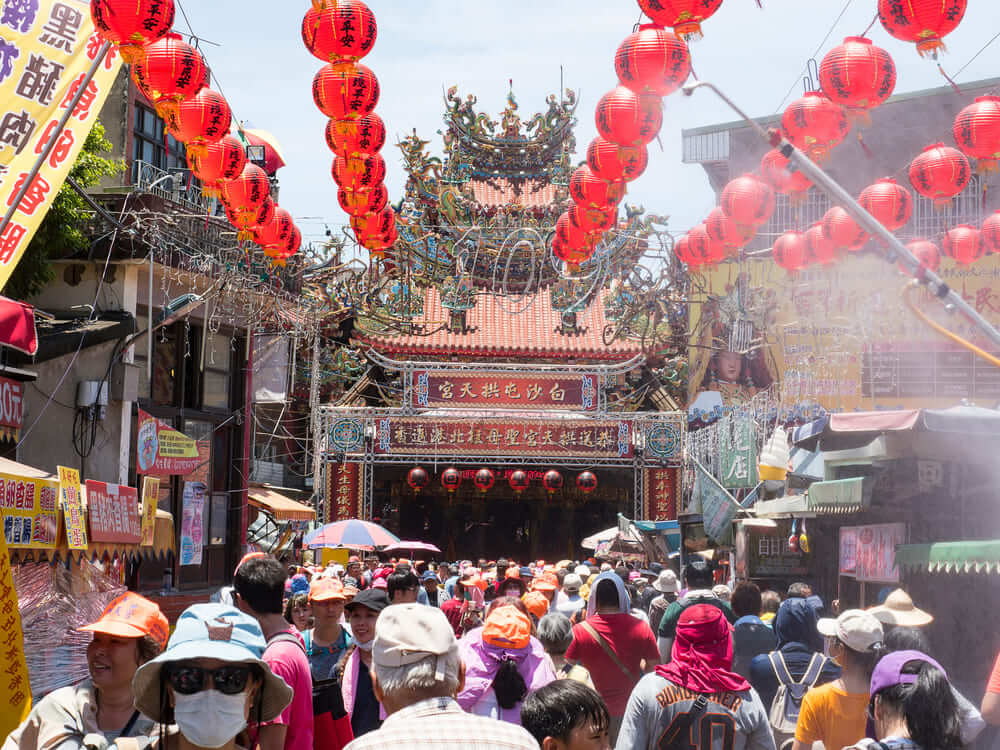
Each season in Taiwan offers unique and exciting activities and attractions. Here’s a breakdown of the highlights for each season:
|
Season |
Activities |
|
Spring |
• Matsu pilgrimages in various locations (e.g., Dajia Matsu Pilgrimage ) |
|
• Cherry blossom season, calla lily season, and tung blossom season |
|
|
Summer |
• Dadaocheng Summer Festival |
|
• Yilan International Children’s Folklore Folkgame Festival |
|
|
• Taitung International Balloon Festival |
|
|
• Penghu Fireworks Festival |
|
|
Autumn |
• Lukang Folk Arts Festival |
|
• Maple Viewing Festival |
|
|
• Sun Moon Lake Mass Swim |
|
|
• Taichung Jazz Festival |
|
|
Winter |
• New Taipei City Christmasland |
|
• Taipei 101 New Year’s Eve Fireworks Show |
|
|
• Hot Spring Festivals in various locations |
|
|
• Snow viewing at Taipingshan and Hehuanshan |
Read More: 台灣環島路線推薦|單車、火車、機車環島全攻略
The Best Time to Visit Taiwan: Frequently Asked Questions by Season
Q: Which season has the fewest crowds?
A: It was previously thought that summer (June-August) would have the fewest crowds due to Taiwan’s scorching heat.
However, with the growing popularity of cycling around the island, summer has become the peak season for students to embark on their cycling adventures, thanks to the long summer vacation. Summer is now likely the season with the fewest foreign cyclists touring Taiwan.
Q: How to avoid typhoon season?
A: Typhoon season mainly occurs from July to September.
If you want to avoid it, it’s recommended to plan your round-the-island trip between October and June. However, remember that typhoons don’t happen every day, so it’s always a good idea to stay updated on the weather forecast.
Q: Which season is best for photography?
A: Each season in Taiwan offers unique and picturesque scenery! Spring’s flower blossoms, summer’s coastal views, autumn’s fiery foliage, and winter’s snowy landscapes all make for stunning photographs. However, overall, autumn (September-November) might be the most ideal season for photography due to its stable weather and soft lighting.
Q4: When is the cheapest time to cycle around Taiwan?
A: Traveling during the off-season is usually the most budget-friendly option.
Avoid summer vacation and consider visiting during the shoulder seasons of spring and autumn, especially on weekdays, as you might find discounts on accommodation and attractions.
However, sometimes finding good deals is also a matter of luck! (For example, stumbling upon a last-minute room promotion.)
Read More: Taiwan Bike Tour: 6 Steps to Plan Your Taiwan Cycling Tour Cost
Q5: How many days are ideal for cycling in the best time to visit Taiwan?
A: This depends on your cycling speed and how deeply you want to experience each place. Generally, 10-14 days is a comfortable timeframe for a round-the-island trip. However, if you have more time, we recommend planning for around 20 days, allowing you to savor the beauty of Taiwan at a more leisurely pace.
Popular Posts:
Read More: 台灣環島路線推薦|單車、火車、機車環島全攻略
